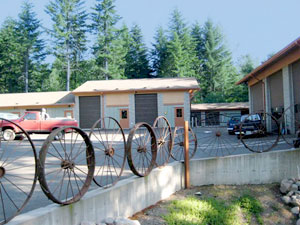 Amenities Amenities
|
Packing Tips 
Get Things in Order
Your move will be easier and smoother with pre-planning. Here are several handy tips to help you get started.
- Always create a thorough and complete inventory of what you will be moving to your new address.
- Don't forget to photograph or videotape any unique or valuable belongings.
- It's also wise to make a note of the serial numbers on your electronic equipment.
What You'll Need
Before you can start packing, you'll need to have the following materials:
* Strong Boxes.
* Wardrobe Boxes with Hanger Bars.
* Packing Tape.
* Bubble Wrap, Newspaper, Wrapping Paper, and Tissue Paper.
* Ziploc Bags.
* Magic Markers.
Notes for Wrapping
- Wrap all your breakable items in bubble wrap, wrapping paper, or tissue paper.
- Because newspaper may leave ink smudges on your items, it should only be used to cushion items that are already protected.
- You can use old linens, blankets, and towels to wrap and cushion fragile items.
- Ziploc bags can be used for small odds and ends that usually clutter your drawers.
Pack It Up
- It makes good sense to begin packing well ahead of the move.
- We recommend that you use good quality, strong moving boxes, and be certain that the bottoms are fully secured.
- Don't get overwhelmed. Try to concentrate on one room at a time. Be sure that every box is clearly labeled by room and item.
- Once your moving boxes are filled, they should be placed in an area close to your front door.
- Any items that you don't need for your daily living routine should be packed first.
- Important items (such as photographs, wills, jewelry, home videos, and any other important documents) should be packed separately so that you can personally carry them with you on moving day. Another alternative you might want to consider is placing these belongings in a safety deposit box until after the move.
- Fragile items should be packed loosely with plenty of wrapping. The boxes must be clearly labeled "FRAGILE", and finally you will want to stack them towards the top of your piles.
- Non-breakable items should be packed snugly in smaller boxes. You will want to make sure that they are not too heavy, and that they are at a weight you feel comfortable carrying. Don't forget to pack your books flat, alternating the bindings so they will stack evenly.
- When possible, small appliances and electronic equipment should be packed in the boxes they came in, and then taped securely.
- In order to avoid unnecessary ironing later on, make sure you have enough wardrobe boxes.
Bulky Things
- When disassembling your bed, use tape or rope to bind the frames together.
- Your drawers should be filled with wrapped items or clothes. Entire drawers should be covered with a blanket or old linens. You shouldn't tape the drawers shut - the finish on your drawers may be damaged.
- Cover your tables with a blanket or old linen. When possible, remove the legs. Always wrap the nuts and bolts in a plastic bag and secure them to a leg.
- Check your owner's manual for any special moving instructions of appliances and other electronic equipment.
- In order to keep the tub of your washing machine from moving around during the move, fill it with stuffed toys, blankets, towels, and old linens.
- Make sure that all loose parts in your refrigerator (including ice containers and drawers) are secure. Any exposed coils should be padded to protect them during the move as well.
Breakables & Odd Shaped Things
- Bicycle handlebars should be loosened and turned sideways. Don't forget to keep the chains and pedals covered, otherwise grease and oil might rub off on other items.
- Small mirrors should be carefully wrapped and packed in boxes. Cardboard should be used to cover large paintings, artwork, or wall mirrors. When possible, these items will be kept safe in wardrobe boxes.
- Because your outdoor furniture may be too bulky or heavy to move in one piece, you may need to disassemble it. If so, be sure to place the nuts and bolts in a plastic bag and attach it to the furniture.
- Carpets and rugs should be rolled up and carefully secured with tape or rope.
- Wrapping sharp edges on any tools or attachments will help prevent injury. Power tools should be packed with plenty of cushioning. Be sure to tie or tape your tool chests securely closed.
- A very important reminder is to carefully dispose of the gasoline and oil from your lawnmower and other machinery, as well as any flammable or poisonous household products. Remember not to pack rags that are soiled with fuel. They should be properly disposed of to avoid spontaneous combustion.
|
 |


